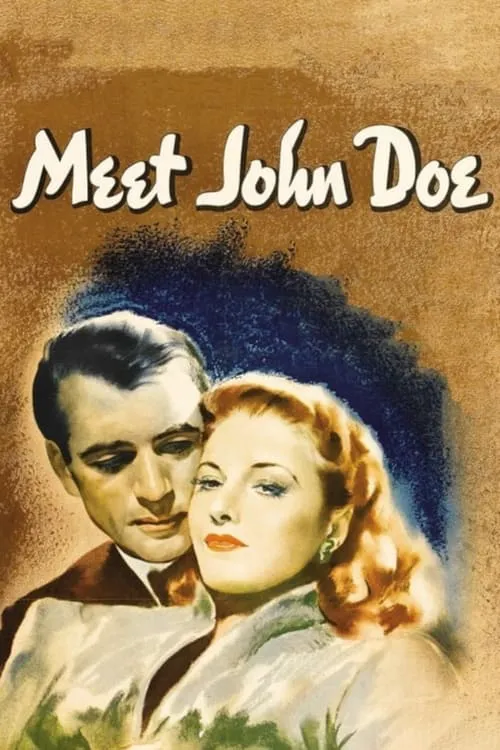Meet John Doe

Plot
In the midst of a chaotic and uncertain time in America, the struggles of the common man weighed heavily on the minds of the populace. It was against this backdrop that "Meet John Doe," a poignant and thought-provoking film, comes to life. Directed by Frank Capra, this cinematic masterpiece weaves a complex narrative that not only reflects the societal issues of its time but also poses poignant questions about identity, morality, and the power of the media. The story begins with Ann Mitchell, a young and ambitious newspaper reporter who finds herself without a job, having been fired from the Daily Stranger due to her progressive views. Seeking to make a statement, Ann, in a bold and somewhat desperate move, fabricates a letter from a nameless "John Doe" who declares that he will take his own life in protest of the injustices he perceives in society. The plan, Ann thinks, is to stir up outrage and spark a movement, thereby making a name for herself and perhaps regaining her job. However, Ann's plan quickly spirals out of control. The paper, desperate for attention and clicks, reprints the letter, and the nation begins to take notice. Before long, people from all walks of life are speaking about "John Doe," a man who represents their hopes and frustrations, their struggles and dreams. The media, sensing a good story, begins to milk the "John Doe" phenomenon for all it's worth, and Ann, forced to confront her own cynical intentions, finds herself caught up in a whirlwind of public adoration and attention. Enter John Willoughby, a charismatic former football player who is hired to impersonate "John Doe" and perpetuate the illusion. Initially, Willoughby is happy to play along, seeing it as a publicity stunt and a way to make some extra cash. However, as he becomes more deeply entrenched in the role, he begins to experience a transformative epiphany. The more he delves into the "John Doe" character, the more he comes to realize that the man he is portraying is not so different from himself – a man struggling to make ends meet, to find purpose and meaning in a chaotic world. As the movement gains momentum, Ann finds herself torn between her initial intentions and a growing sense of responsibility to the people who have come to believe in "John Doe." She becomes increasingly disillusioned with the paper's cynical handling of the story and begins to see John Willoughby's transformation as a genuine manifestation of something greater. Meanwhile, Willoughby, now fully immersed in the role, starts to speak out on issues of social inequality, economic injustice, and the human condition, resonating deeply with a nation weary of empty rhetoric and promises. The film's central theme – the dichotomy between identity and persona – serves as a powerful metaphor for the societal malaise of the time. As the nation becomes increasingly fixated on the mythical "John Doe," individuals begin to lose sight of their own identities and, in doing so, lose touch with their own humanity. Willoughby, as the embodiment of "John Doe," represents a paradox – a man who, through his impersonation of one, discovers his true self. Ultimately, "Meet John Doe" is a film about the power of the media and the responsibility that comes with it. As Ann Mitchell grapples with the consequences of her actions and John Willoughby's character undergoes a profound transformation, the narrative serves as a cautionary tale about the consequences of manipulating people's emotions for the sake of ratings or clicks. In doing so, the film offers a poignant commentary on the human condition, urging viewers to question their own assumptions and consider the very real impact that their actions can have on others. As the film hurtles toward its conclusion, the tension builds toward a climactic showdown between the ideals represented by "John Doe" and the cynical interests of the media. The result is a narrative that is both thought-provoking and deeply moving, a true masterclass in storytelling by one of Hollywood's greatest directors. "Meet John Doe" lingers long after the credits roll, its themes and motifs lingering in the viewer's mind as a powerful reminder of the transformative power of art to inspire, to provoke, and to challenge our assumptions about the world around us.
Reviews
Recommendations





